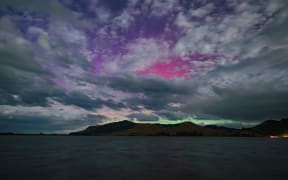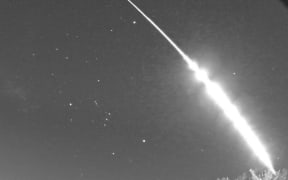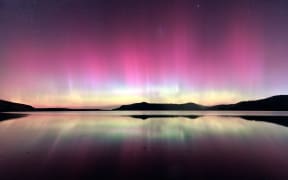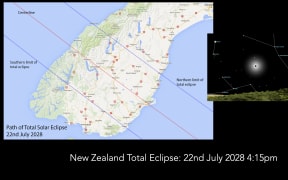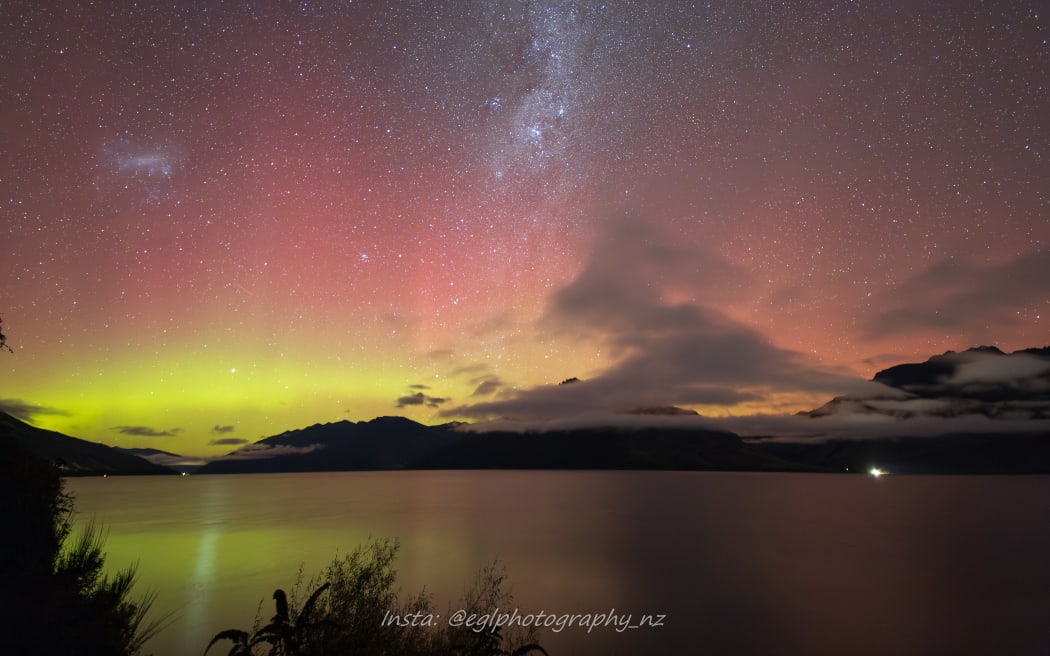
Aurora above Lake Wakatipu, between 5 and 6am on Saturday 20 April. Photo: Supplied/ Jim Perdue @eglphotography_nz
Two nights of bright aurora have had photographers running for their cameras to capture the multicoloured skies.
Gilberto Garduño, who is visiting Queenstown from Mexico, was thrilled to snap some gorgeous multicoloured photos despite being new to astrophotography.
"One of the motivations to stay out in the cold was the excitement of the 'hunt' of the auroras. I have never seen them with my naked eye and this was one the things to do in my list while I'm travelling around New Zealand.
"To me it is such a wonderful thing that [bursts from the] plasma of the sun travels millions of kms to reach the Earth's magnetic field and interact with the atmosphere molecules to give us such beautiful colours! It just reminds me how amazing nature is and how complex is the science behind it, but it gives us wonderful colours."
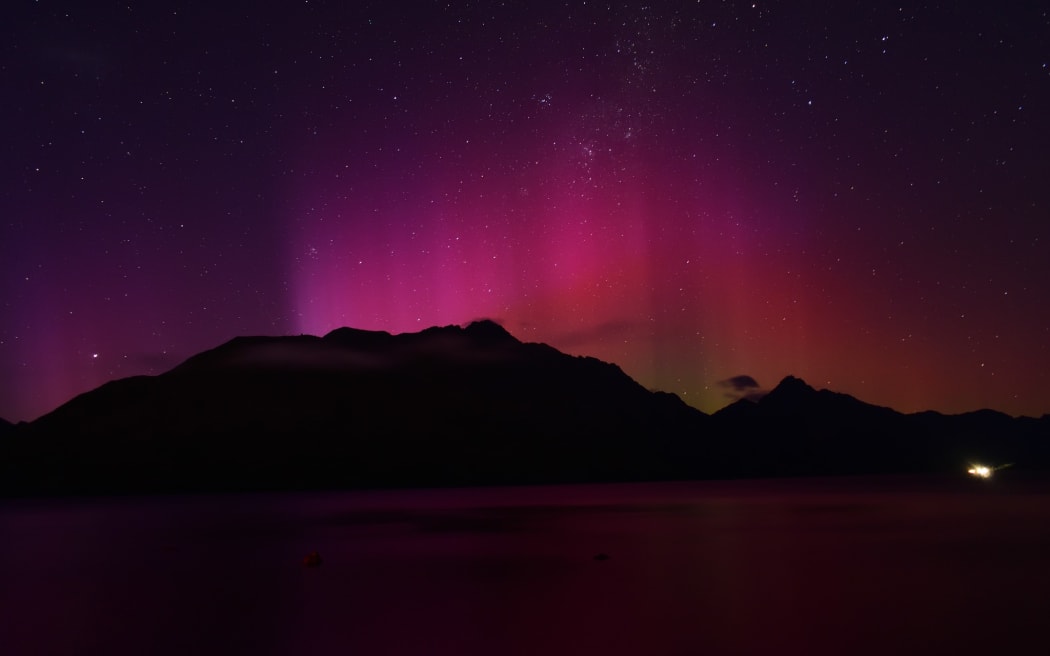
Aurora Australis, captured from the Queenstown Gardens around 6 am on 20 April, 2024. Photo: Supplied/ Gilberto Garduno
Astronomer Ian Griffin said the lights were strong enough to be captured from much of the South Island on Friday night and Saturday night, even with the lights having to outshine a near- full moon to be visible.
"It was a big aurora, that's for sure. I've seen some really nice pictures from central Otago and Christchurch over the last few nights. They do have to be pretty strong aurora to see them with the moon," Griffin said.
Aurora are caused by material ejected from the sun at just the right angle that it enters Earth's atmosphere, where it interacts with particles at the Earth's geomagnetic poles "causing a glow" which is known as the Northern Lights or Aurora Borealis at the top of the Northern Hemisphere, and the Southern Lights or Aurora Australis in the south of the Southern Hemisphere.
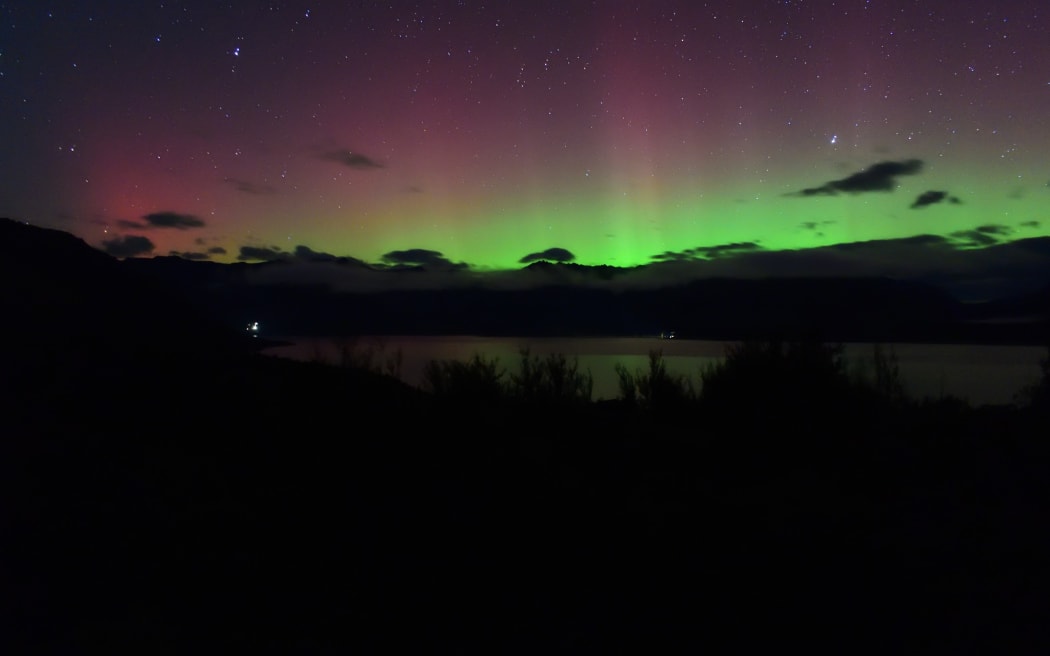
The Southern Lights seen from Bennetts Bluff lookout between Queenstown and Glenorchy, just after 3am on 20 April. Photo: Supplied/ Gilberto Garduno
The best places to see the Southern Lights are from Antarctica and the Southern Ocean, but "New Zealand and Tasmania are the two best places to go if you don't want to go to Antarctica," Griffin said.
In Tasmania, sightings of the southern lights were reported across the state this weekend, with many posting their photos online, the ABC reported.
While it was too cloudy for Griffin to see the aurora himself on Saturday night through Dunedin's city lights, he did capture a bit on Friday night with his camera.
"Cameras are really good at seeing aurora, whereas the eyes are not so good. The eyes tend to see washed out greens in the sky, whereas the cameras will see it really clearly, and see pinks and purples."
Aurora fan Jim Perdue, originally from the US, said it was about 3C when he ventured out to see the lights in Queenstown early on Saturday.
"I was fortunate to wake up unexpectedly around 3am, and had remembered from [Facebook] posts that there may be activity that night, so I checked the Glendale App and then the Queenstown Webcam and was amazed at the display and current readings on the app.
"So I had to bear the cold, because unlike most other astrophotography targets in the sky, the Aurora Australis is always unique, you never know what you may capture. There was a gentle breeze, but Lake Wakatipu was smooth and the sky was clear and I could immediately see the Aurora in the sky as a white light-like glow, so I knew I made the right decision."
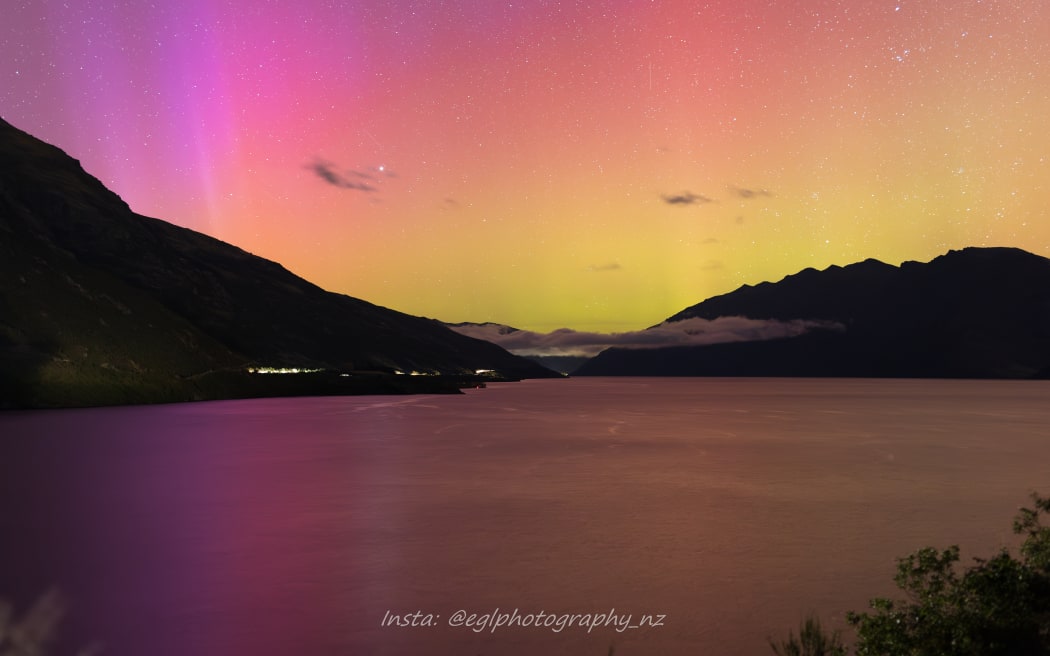
Aurora captured by Jim Perdue early on Saturday morning Photo: Supplied/ Jim Perdue @eglphotography_nz
Perdue said he has been able to captured the Southern Lights on about 20 different occasions from Queenstown since February last year, but it didn't stop him taking hundreds more photos on Saturday, both from a spot he hiked to, and then in the car park when the aurora fired up again as he was leaving.
"We are very fortunate here in New Zealand to be able to see and capture this amazing display of lights in the sky on such a regular interval."
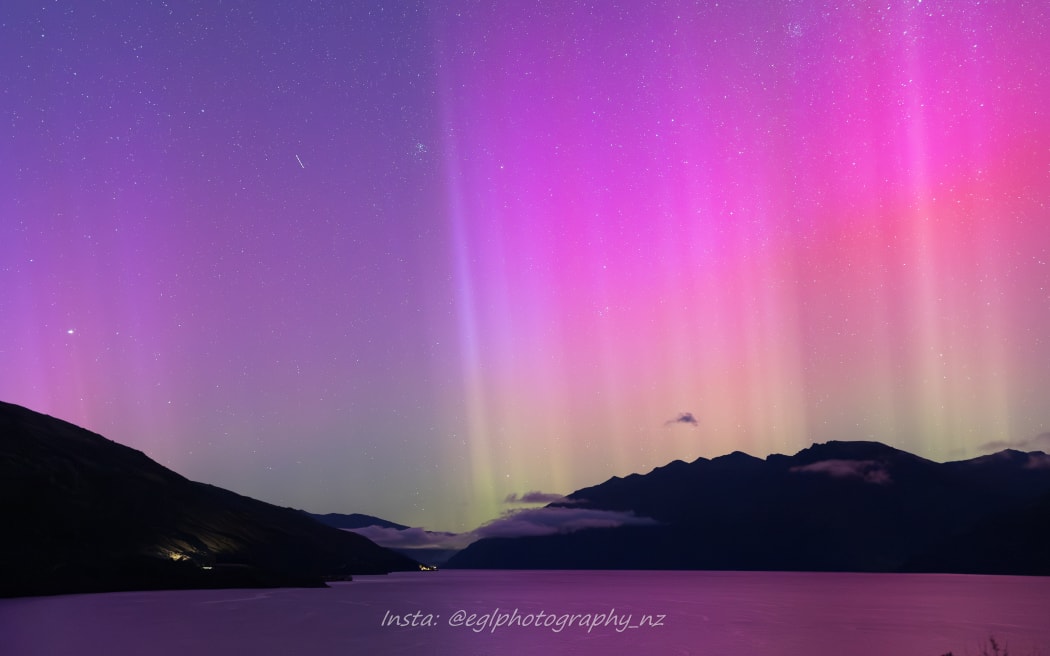
Photo: Supplied/ Jim Perdue @eglphotography_nz
Aurora are likely to increase through the next few weeks and months, as an increased period of solar activity occurs, Griffin said.
"So it's a really good time to get out there and look at them. Some of these aurora are strong enough that you can see them even if the moon is full.
"And winter nights are good because they're getting longer."
For those interested in learning more about aurora and when they could happen, and having a go at capturing them in photos or seeing other people's photos, Griffin recommended the Aurora Australis group on Facebook.
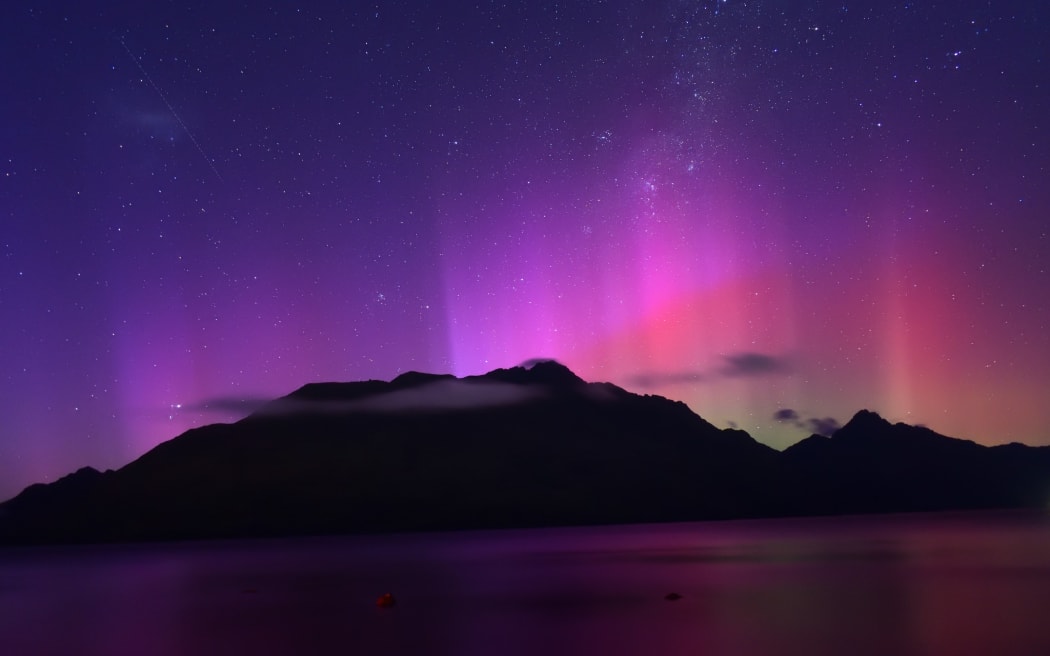
The lights seen from Queenstown Gardens early on Saturday morning. Photo: Supplied/ Gilberto Garduno
